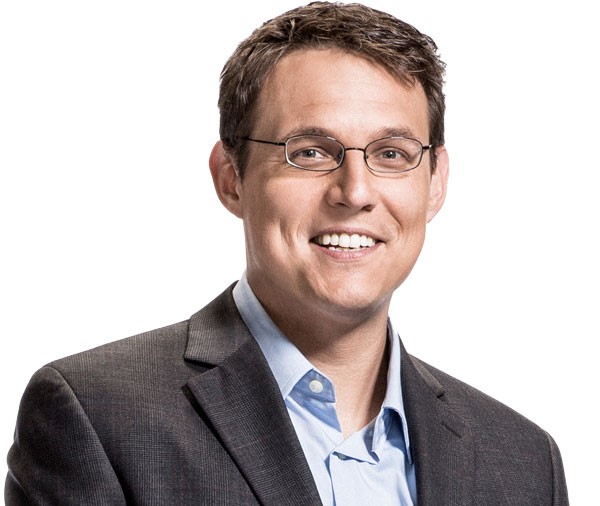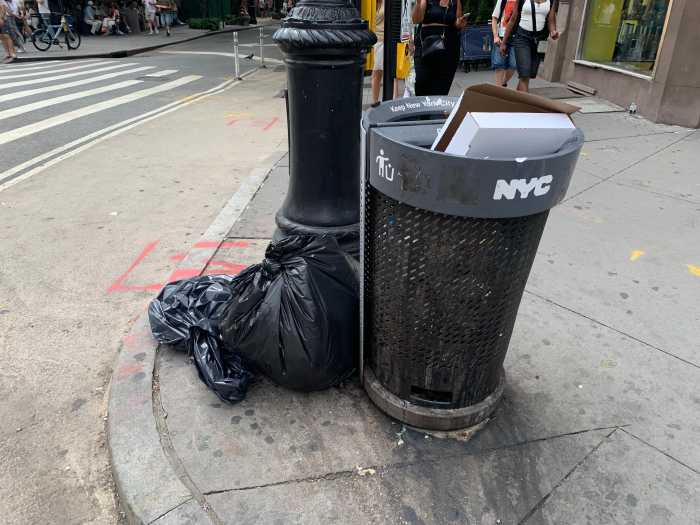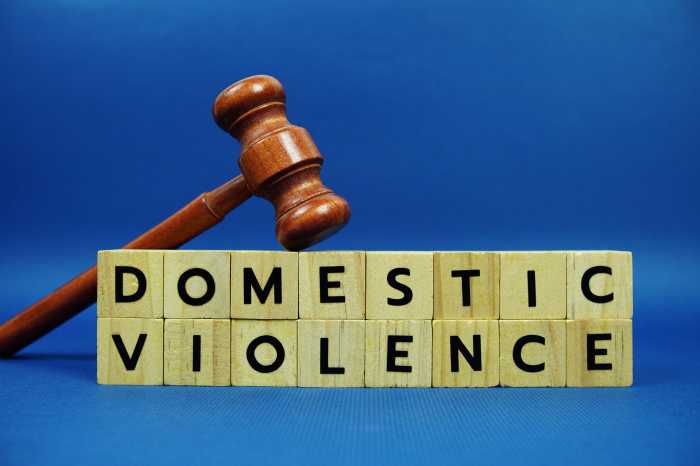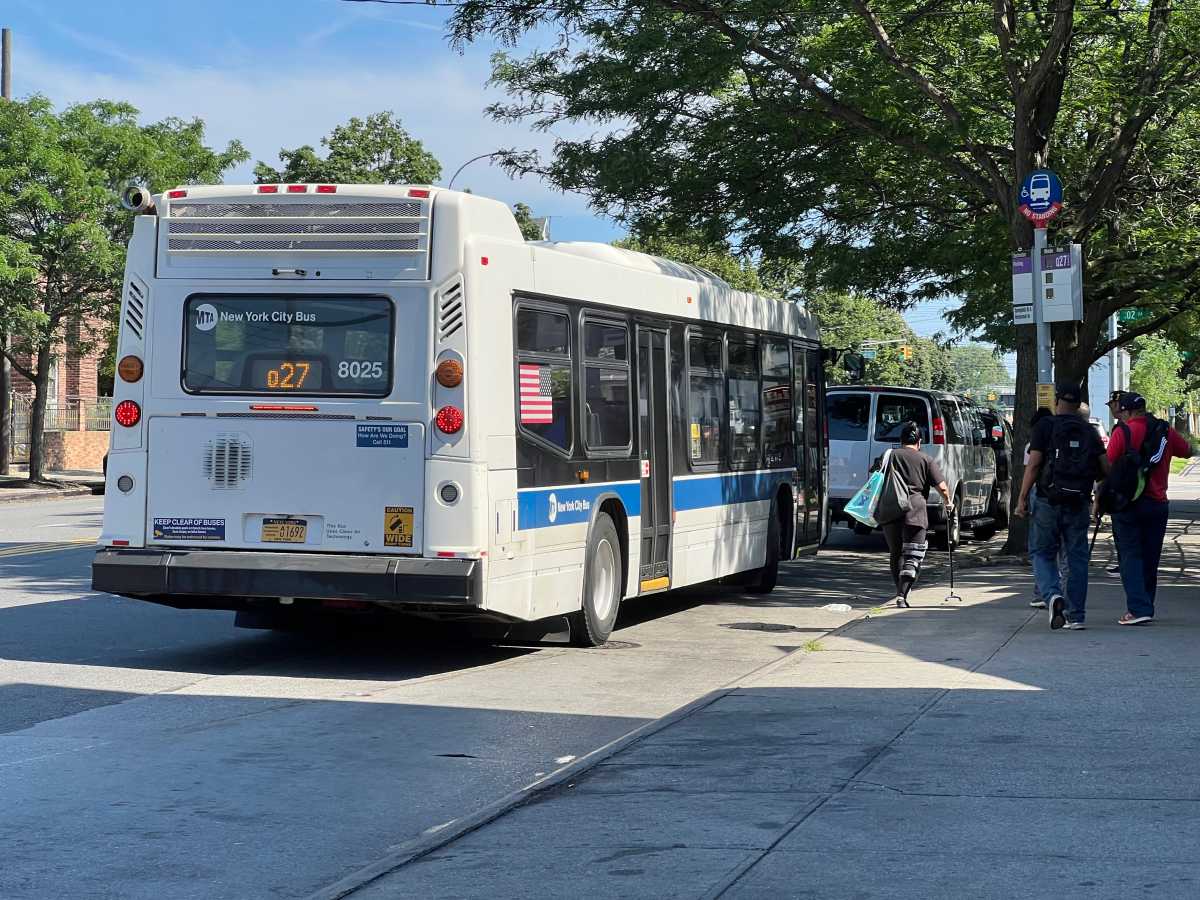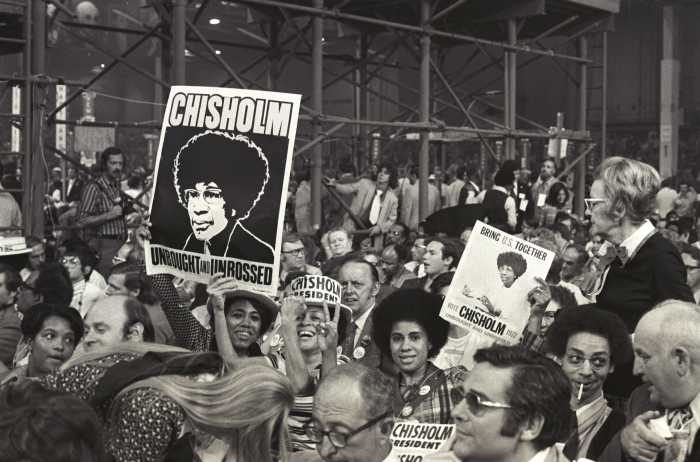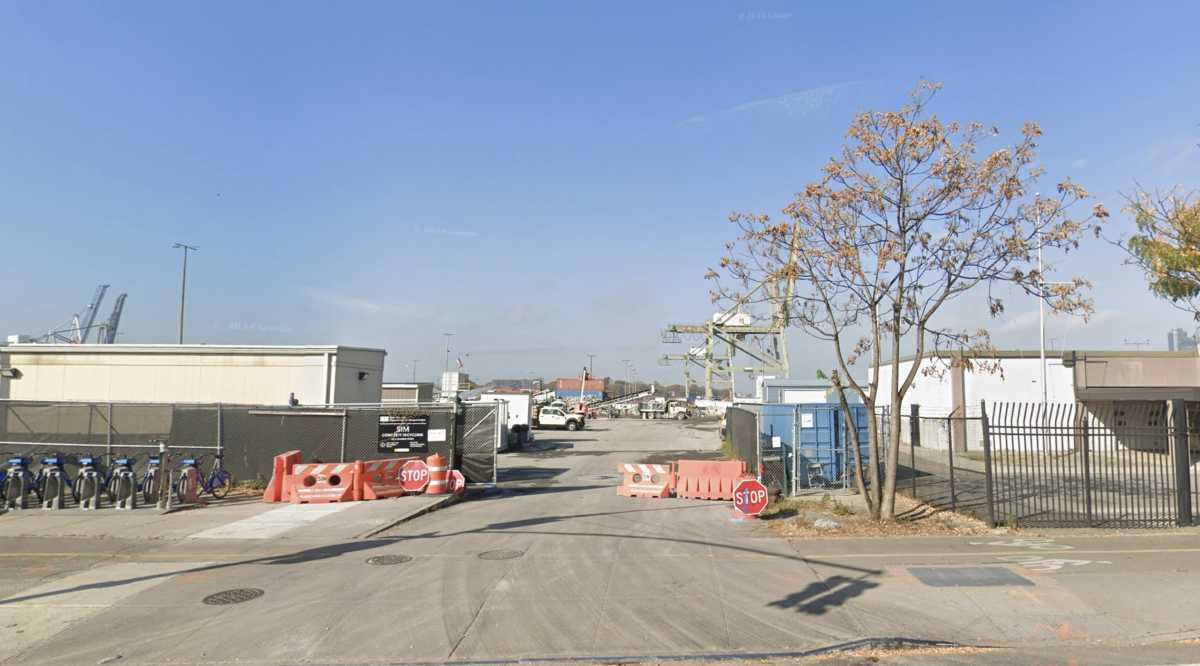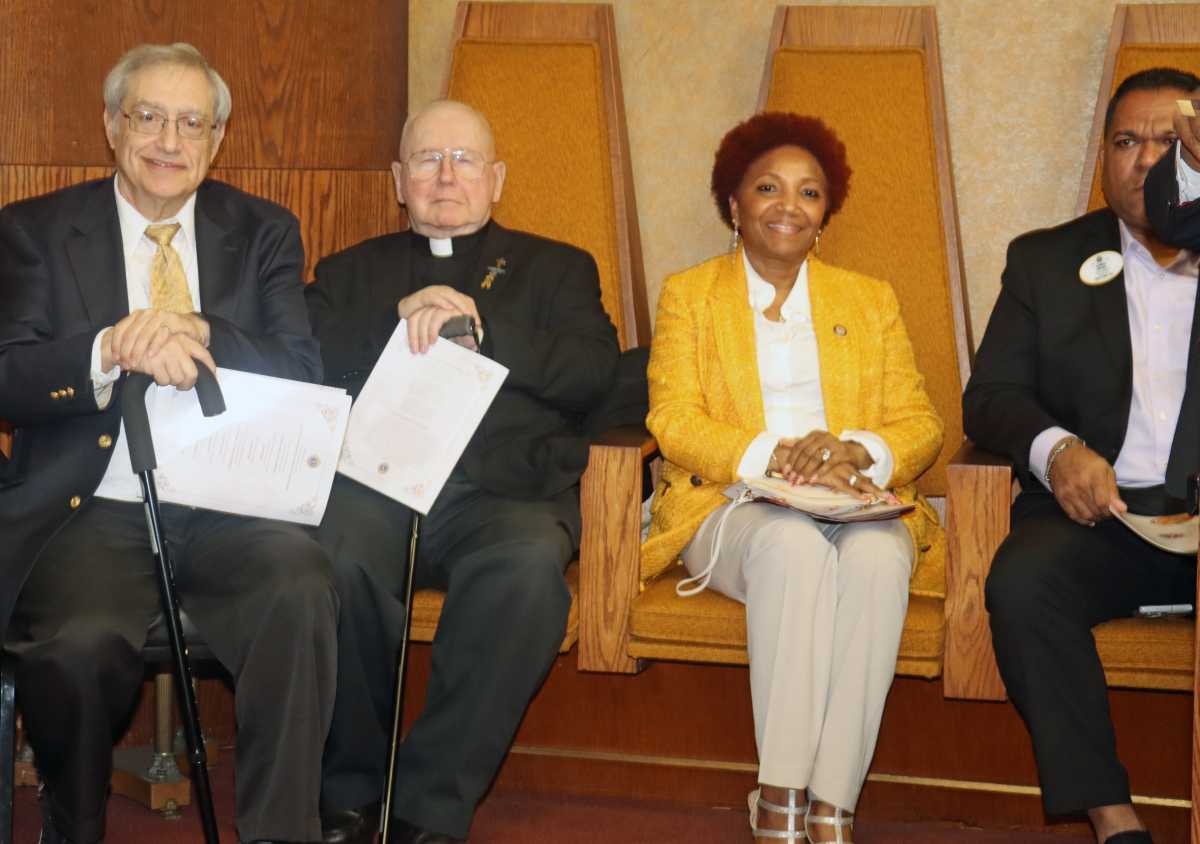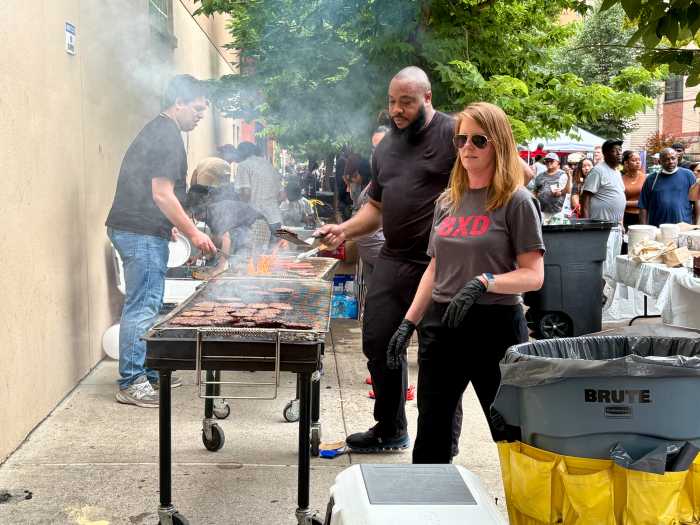
BY LINCOLN ANDERSON | Steve Kornacki lives and breathes politics. But he drinks Narragansetts.
At least, that is, when he’s outside of the MSNBC studio and enjoying the bustling bar scene in the neighborhood he calls home, the East Village.
In a quick interview with The Villager in between TV segments on a recent Friday afternoon, Kornacki, 36, laid out the landscape of both the presidential race and his favorite local watering holes.
Kornacki, who grew up in Massachusetts, has become one of cable news’s top up-and-coming anchors. He currently hosts MSNBC’s “MTP Daily” on Monday afternoons, and is the station’s political reporter and fill-in host, subbing for Rachel Maddow, as well as Chris Matthews on “Hardball,” as needed. Until last month, he hosted “Up With Steve Kornacki,” an early-morning show on the weekends, which, he admits, put a crimp into his barhopping.
He cut his teeth in journalism in New Jersey, where he wrote for a political news site, then went on to cover Congress for Roll Call, before joining the staff at Salon in 2010. In a 2011 Salon article, he came out as gay — at the age of 32.
His ongoing assignment now is the 2016 presidential election. It’s a dream beat for this political junkie, who is known for his fact-laden, deep-dive-style reporting.
He also recently covered the “House chaos,” as he put it, that saw Paul Ryan elected speaker.
He’ll currently break into the newscast at any given moment to report on the latest developments in the presidential race. And in this wacky election, there has been more than ample opportunity.
“I just think, to cover this one…this is the most interesting campaign I have ever watched or covered,” he said, speaking after just having wrapped a 2 p.m. segment. “The Republican race, it’s just so volatile…the possibility of Trump being the nominee. We were thinking it could be a two-week flash in the pan — and it’s November and he’s the front-runner.
“When you break down where his numbers come from, people who call themselves moderate and liberal Republicans, he is cleaning up with them,” he noted of Trump. “And when you see how Mitt Romney won the nomination, he won the moderates. Those are the same voters who are with Trump right now. You’d think they should be with Bush for Chrissake.”
O.K., so assuming Trump really does win the G.O.P. nomination, The Villager asked Kornacki, could the Donald actually beat, say, the Democratic front-runner, Hillary Clinton, in the general election? Or is that just too ridiculous a thought to even contemplate?
“I know the conventional wisdom is this is Hillary Clinton’s dream opponent,” Kornacki offered, though adding, “I look at the breadth of his support on the Republican side. He is such a unique character. There’s such an unpredictability.”
That said, Kornacki noted, “I tend to think Rubio is the best bet” to snag the Republican nomination.
As for Clinton, he feels, as others pundits do, that she’s starting to look more confident.
“I really think that debate performance and the Benghazi thing just reassured Democrats,” he said, referring to last month’s debate and Clinton’s comportment in the Benghazi hearing.
Does progressive favorite Bernie Sanders have a chance of upsetting her in the primary? The Vermont senator recently won a straw poll of 300 Manhattan Democratic political club members in Chelsea held after they watched a debate between surrogates for the three candidates.
Yet, Kornacki explained, while Sanders is polling strongly in Iowa and New Hampshire, two heavily white states — “these would be Bernie Sanders’s dream states,” he pointed out — the South Carolina primary could bring him crashing back to earth. South Carolina is 55 percent black, and Clinton is leading Sanders among black voters by a whopping 70 points.
“He has basically no support among black voters,” Kornacki stated. “He’s been trying to hit the right issues and getting no traction.”
In other words, even if Clinton tanks in Iowa and New Hampshire, she still has the numbers in the long run.
Flashing back to previous presidential elections, Kornacki, the student of politics, noted, “I am pretty sure Bill Clinton got 80 percent of the black vote on Super Tuesday in 1992. Walter Mondale crushed Hart with black voters in the South in 1984.”
In short, he said, “Sanders has half of what Obama had in ’08,” namely because Clinton seemingly has a firm hold on the lion’s share of black support. In ’08, Obama had support from white college-educated liberals, just as Sanders does now. But black voters, initially skeptical of Obama, flocked to him once he proved he could win by upsetting Clinton in the Iowa caucuses. Kornacki simply does not foresee a similar scenario where black voters rally behind the socialist senator.
Asked what he thinks of the Ben Carson phenomenon — another nonpolitician riding surprisingly high in the polls — Kornacki said, “It’s coming from evangelical voters — it’s the source of his strength. Maybe it’s his humility, his humble bearing. It’s a symbol of how topsy-turvy this election has been.”
As for New York City politics, Kornacki said, “I’m an observer.”
However, with Mayor Bill de Blasio trying to have a role on the bigger stage, local and national politics are intersecting. Regarding de Blasio’s long-delayed endorsement of Clinton, it went over like a lead balloon. The Clinton campaign released a list of 130 mayors who are supporting her, and de Blasio wasn’t even listed first.
“They tried to make the endorsement an event,” Kornacki noted of the de Blasio camp. “Instead, they alienated the Clinton people. He ran her 2007 Senate campaign. She’s responsible for his success, in a sense.”
In fact, he said, it’s her opponent Sanders, not de Blasio, who has been pushing Clinton to take more liberal positions.
If the New York mayor is hoping to affect the Iowa vote, polls show voters out there don’t really have a sense of who he is, Kornacki noted.
Kornacki has lived in the East Village in two separate stints, the first for two years, in 2007 and 2008, and now for the last three years.
Asked what he enjoys about the neighborhood, he said, “I like that it’s a cool mix of the old and new. There are a lot of young people from all over the place. But you walk down Second Ave. and you see the Ukrainian social club and the Ukrainian federal credit union. My family on my mother’s side is Ukrainian. And there are the big old Catholic churches” — well, at least those that haven’t been knocked down for development yet.
“To be honest, I love the bars,” Kornacki said. “I hate fancy bars with expensive drinks, where you have to dress up.”
Some favorites he listed are Sophie’s, 7B / Horseshoe Bar — “whatever it’s called,” he said. “I call it Horseshoe Bar. My friends all call it 7B.”
“Lucy’s might be my all-time favorite because of Lucy,” he said. “Standings sports bar on Seventh between Second and Third, it’s gotta be the coolest sports bar in the country. … Seventh and First, we all call it ‘Tile Bar.’ I love Coal Yard, at Sixth and First Ave. Oh, oh! — Drop Off Service, at 13th and A.”
His go-to brew is Narragansett, not surprising given his New England roots.
He’s a little concerned, though, that the East Village scene is starting to morph for the worse.
“Avenue A feels like the bar scene is changing a bit,” he said. “There was a place that had a rope line — like the West Village was moving in, or the Meatpacking District…sort of like the bridge-and-tunnel crowd. Not to be derogatory, but… .”
In terms of local places to eat, he likes Gruppo for pizza and Fonda for Mexican food, Little Frankie’s and Supper restaurants, plus Barnyard for sandwiches.
The news host wasn’t adverse to a question about his sexuality. Basically, coming out felt like it would be a big deal, but when he did it, it really wasn’t.
“Honestly, it’s sort of I don’t think about it,” Kornacki said of how feels now about being gay. “I had a lot of stress about it for a long time. Once I wrote that essay a few years ago. … I think I pretty much figured it out in high school, but I didn’t deal with it till I was like 30. I had fears about coming out. But being it — and everything is exactly the same — now I’m not paranoid about it.”
The interview was winding down, as Kornacki had to jump back in front of the camera. He explained he had to do an interview with the Carson campaign about the “revolt” by the Republican candidates against the networks’ debate format.
Between the time of The Villager interview and the writing of this piece, there were, of course, more wild developments in the election, particularly in the Republican race, such as, for starters, the media’s accusations that Carson has been lying about his biography. The Villager, this week, asked Kornacki for his take.
“I don’t think the Carson controversy has hurt his core support at all,” he responded in an e-mail. “There’s enough gray for the people who already believe in him to believe him when he says he’s being persecuted by the media.”
How about Trump’s turn on “Saturday Night Live” and the accompanying “Basta Trump!” protest outside NBC studios at Rockefeller Center?
“SNL got big ratings with Trump, so once again he gets to go out and brag about what a big star he is,” Kornacki said. “The protest is nothing new — it’s what he’s been facing since he made his comments at the start of the campaign. As long as he’s at or near the top of the polls and bringing in big ratings hosting SNL, he has the ammunition he needs to dismiss the protests.”
Over all, despite what the polls say, how this election turns out, as usual, is anyone’s guess. And Kornacki’s very informed, ongoing take is as good as any.
“I look at this pretty much is that I have a one-year sprint to the presidential election,” he said.



